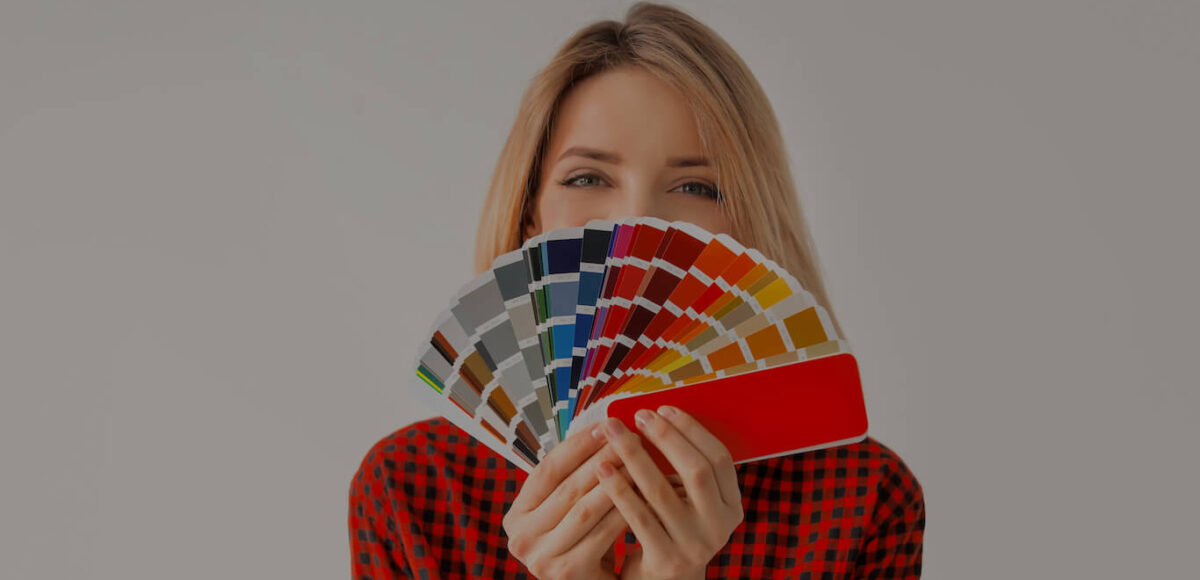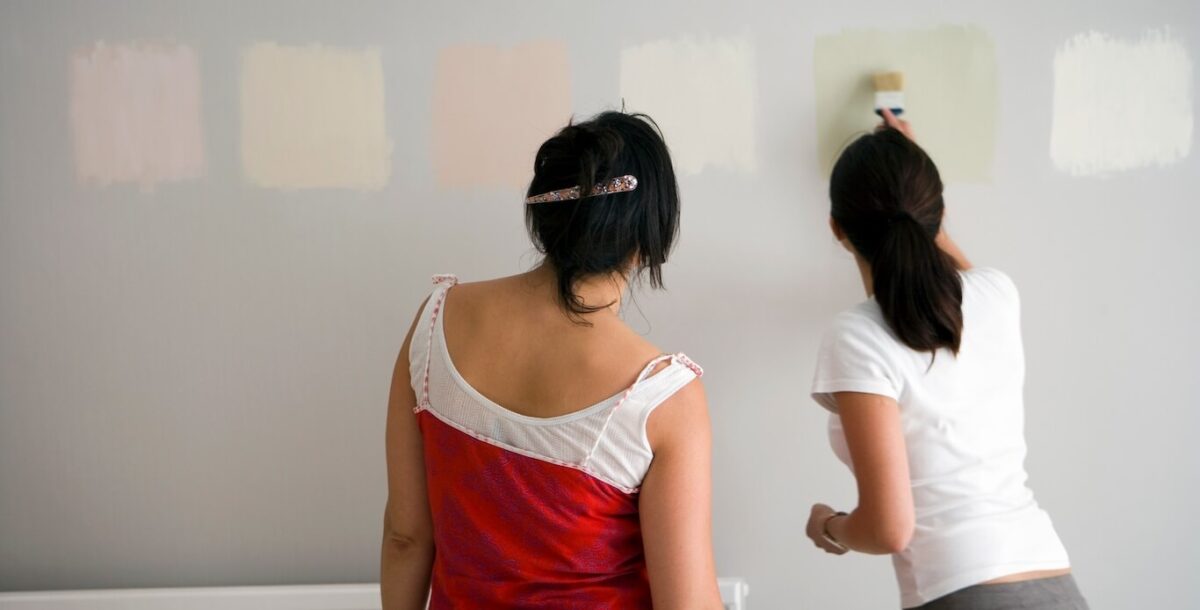Color plays a pivotal role in transforming your space from bland to grand — and shades like red, blue, green, and pink are likely in your vocabulary. But what about chartreuse, aubergine, celadon, vermillion and beyond?
Increase your color vocabulary and get inspired to experiment with color with these eight unusual color names.
1. Vermillion: A Bright, Deep Red
First up on the list is Vermillion. It’s a common misconception that vermillion is a green shade. In fact, it’s on the opposite side of the color wheel! Vermillion is a bright, rich red hue popular in Chinese lacquerware.
How Did Vermillion Get Its Name?
This punchy red derived its name from the Latin word ‘vermilio’ — related to ‘vermis’ — meaning worm. Vermillion was the term for the red dye made from the insect Kermes vermilio.
How to Incorporate Vermillion Color in Your Space
Vermillion is a bold hue. Depending on your style, a vermillion color accent wall or vermillion and white patterned motif can inject energy into an otherwise neutral space. Looking to try on the color without overwhelming your room? Consider vermillion accents in artwork, area rugs, or even throw pillows.
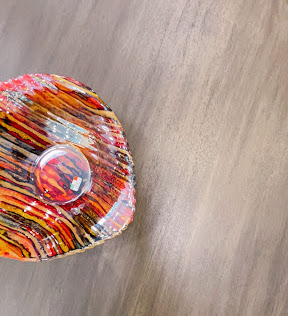
Vermillion can create a modern art-chic look when paired with glass or metal accents — or create a timeless vibe when accompanied by classic wooden furniture.
2. Aubergine: A Dark Brownish-Eggplant Purple
Moody, versatile, and ever-in-style — enter Aubergine. The name “Aubergine” is reserved only for the deepest, richest, and most complex shades of purple.
How Did Aubergine Get Its Name?
Aubergine is a French term for the vegetable eggplant, and the name describes the dark purple hue of this popular nightshade.
How to Use Aubergine in Your Space
Aubergine is a genuinely versatile hue: it can be used instead of black to function as a neutral, or it can add depth and a moody atmosphere throughout bedrooms, living spaces, home offices, and entryways.
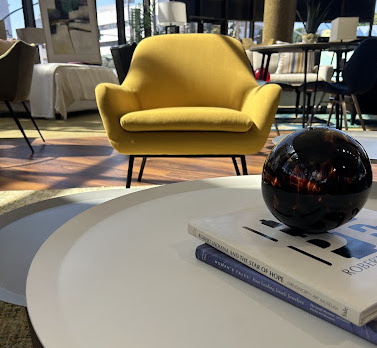
While a popular fall and winter color, aubergine can be used year-round. Embrace a touch of royalty with color upholstered chairs or an aubergine accent wall. This deep purple hue contrasts elegantly with gold accents and neutral-toned furnishings to create a luxe space. It complements light woods and deep, rich shades — making it an excellent choice for nearly any design style, from traditional to modern.
3. Salmon: A Light Pinkish Orange
How Did Salmon Get Its Name?
Salmon is light pinkish orange, and, unsurprisingly, its namesake comes from the flesh tone of salmon fish.
How to Decorate With Salmon
Salmon’s soft pinkish-orange hue creates a warm, inviting ambiance in bedrooms or living areas. Blend it with light wooden furniture or classic white pieces for a serene look or beachside escape. In the bedroom, rise and shine with salmon accent pillows, sunset hues in wall art, or even upcycle your existing furniture with a coat of salmon paint.
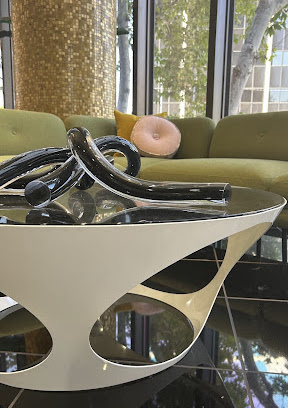
Salmon pairs beautifully with blues, greens, navy, and any neutral hue.
4. Indigo: Between Purple and Blue
Indigo’s name comes from the Latin for “Indian,” as the dye was originally imported to Greece and Rome from India. What color is indigo? A gorgeous blue. Indigo is a popular denim hue — and an overall versatile blue shade.
How to Decorate With Indigo
Indigo is at home in nearly any room, from the kitchen to your office to a bedroom. Transform a space into a tranquil sanctuary with indigo walls or soft furnishings. Complement with natural wood or white furniture for a calming ambiance. Pair indigo with silver or chrome accents for a clean and crisp look. Opt for mirrors and warmer metal tones of champagne, brass, or gold to create a glam feel.
5. Cyan: An Electric, Turquoise Blue
The name cyan comes from the Greek word ‘kyanos,’ meaning dark blue. However — if you’re wondering, “What color is cyan?” — cyan is a much brighter, lighter hue between turquoise and teal with an oceanic undertone.
How to Use Cyan
Cyan is excellent for adding a bright, natural touch. Brighten up a kitchen or bathroom with cyan backsplash tiles, or add a dash of freshness to your living room with cyan cushions or artwork. Balance your space with classic black or grey furniture pieces or neutral rugs.
6. Chartreuse: An Electric Greenish-Yellow
The name chartreuse is derived from the French liqueur “Chartreuse,” which is greenish-yellow. This vibrant hue is often associated with spring design and is a popular high-fashion choice.
How to Use Chartreuse
Add chartreuse accents through decorative vases or an accent wall for a modern twist. Tone down the vibrancy with classic brown or black furniture pieces.
7. Mauve: Muted Violet-Pink
Mauve is derived from the French name for the mallow flower, which is pale purple. This dusty violet pink can be used to add vintage charm and pairs well with hues from brown to black — depending on your desired aesthetic outcome.
How to Use Mauve
Mauve curtains, upholstery, or wall color can bring a gentle elegance to any room. Just like when decorating with pink, you can pair mauve with grey, white, or classic wooden furniture to maintain a timeless elegance. Create the cottagecore vibes of your dreams!
8. Ecru: A Balanced Neutral Linen
The color name ecru comes from the French word meaning ‘raw’ or ‘unbleached’ and is reminiscent of unbleached linen. It’s a color that echoes naturalness and simplicity.
How to Decorate With Ecru
The neutral, soft aspect of ecru makes it a highly versatile color in home decor. The color ecru can provide a warm, inviting background that complements almost any other color.
Consider using ecru for your wall color, upholstery, or linens to create a calm, neutral backdrop in any room. It’s a color that can blend seamlessly with various design aesthetics, whether modern, rustic, or traditional.
Pairing ecru with dark wood dining room furniture from CORT Furniture Outlet can create a balanced, sophisticated look while pairing it with a lighter wood or white furniture can evoke a more airy, casual feel.
Ecru also pairs beautifully with natural textures and materials like wood, stone, or metallic accents. For a subtle, elegant look, mix ecru with other neutral tones, or for a more vibrant look, use it as a backdrop for bolder colors like navy, emerald green, or mustard yellow.
Find Furniture to Match Any Shade at CORT Furniture Outlet
Picking great colors for your home can take time and effort. The options can be infinite, from vermillion to chartreuse and every shade beyond.
Shopping for home furnishings can be even trickier. After all, a cyan sofa may seem like a great idea today, but what about next season when you’re in more of a mauve mood? Accents and paint are relatively simple to change without much consequence other than a bit of time and money (and maybe sacrificing a pair of pants to be covered in paint). On the other hand, furniture can be costly and complicated to replace, and chucking a sofa into the landfill every few months isn’t the most eco-friendly decision.
That’s where CORT Furniture Outlet can save the day! While your walls may have a few layers of the past five colors of the year, a living room set from CORT Outlet is timeless. When you invest in furniture from CORT Outlet, you’re not just purchasing quality crafted pieces that will weather the shifting trends. You’re also keeping gently used furniture from the landfill and extending its life.
So, no matter what colors may be the craze, you can count on your furniture standing the test of time. Shop CORT Furniture Outlet online or visit your nearby CORT Furniture Outlet in-store today.

